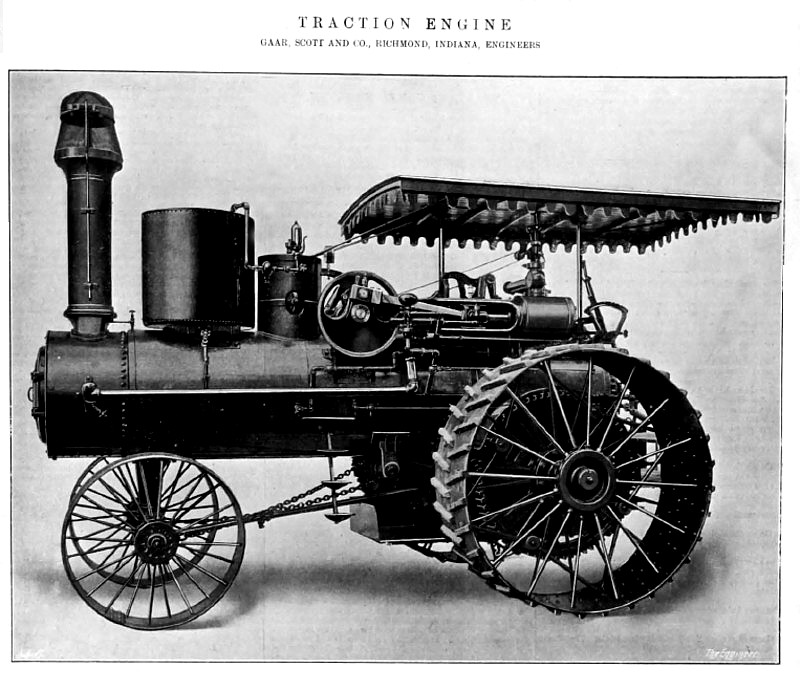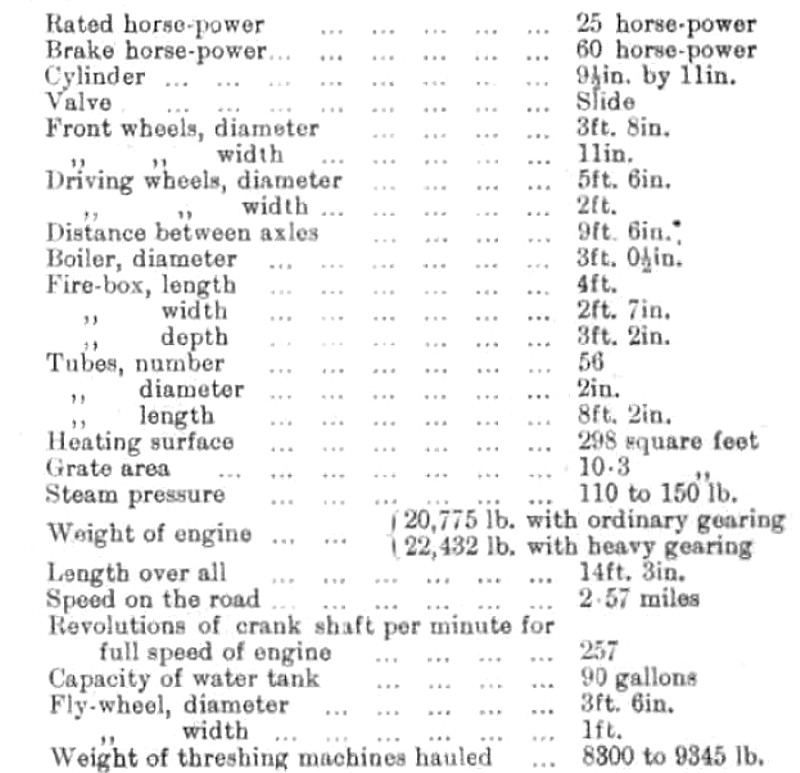|
Title: |
1905 Article-Gaar, Scott & Co., Steam Traction Engine |
|
Source: |
The Engineer Magazine, 01 Dec 1905, pg. 535 |
|
Insert Date: |
1/2/2013 2:31:04 PM |
The Gear-Scott Company's traction engine is shown above. The fire-box is of the locomotive tubular type with 2in. cold drawn seamless steel tubes, fitted with copper ferrules in the ½in. tube sheet, over which the ends of the tubes are beaded. The fire-box has an arched crown sheet, and a round water bottom forming a continuation of the side water spaces. There is an ash-door below the fire door, In the straw-burning boiler, however, there is the usual open rate with ash-pan beneath, but this is built of boiler plates instead of the usual sheet iron. No foundation ring is used, the inside firebox plates being curved and flanged outward at the bottom, and riveted to the outer plates. A very large ?re hole is used with the plates riveted to a hear ring. It has two doors, the straw-feed hopper being fitted to the lower opening and the upper one being available when the tubes are to be cleaned. There is a fire-brick arch extending upward and backward from the lower part of the tube sheet, and in one side of the firebox is a cleaning door. A draught door is placed at each end of the ash-pan. This boiler may be adapted for coal fuel by changing the grates. A special design of straw-burning boiler has return tubes from the smoke-box to an uptake over the fire-door, to which the chimney or funnel is attached.
The dimensions and particulars of the Gaar-Scott Company's 25 horsepower simple traction engines are as
follows:
(see image #2)
The engine is placed on one aide at the top of the boiler, with the cylinder directly over the driving axle, and driving forward to a crank disc on the engine shaft. Link-motion reversing gear is used, with a slide valve. For heavy work, such as steam ploughing and driving the largest threshing machines, where the engine is apt to be worked to its full capacity, there is a demand for compound engines, as they can be run with greater efficiency and economy under such conditions. These are of 33 horsepower, and the only difference from ordinary construction is in the use of tandem cylinders 8½in. by 11in. and 13in. by 11in., and the use of extra heavy gearing. A cross-over valve enables live steam to be admitted to the low-pressure cylinder for a short time, if required in heavy hauling.
Image Courtesy of Grace's Guide
http://www.gracesguide.co.uk/File:Im1905V100-p535.jpg |
|
 1905 Gaar, Scott & Co., Steam Traction Engine
1905 Gaar, Scott & Co., Steam Traction Engine
 1905 Gaar, Scott & Co., Steam Traction Engine (Table of Dimentions)
1905 Gaar, Scott & Co., Steam Traction Engine (Table of Dimentions)
|
|